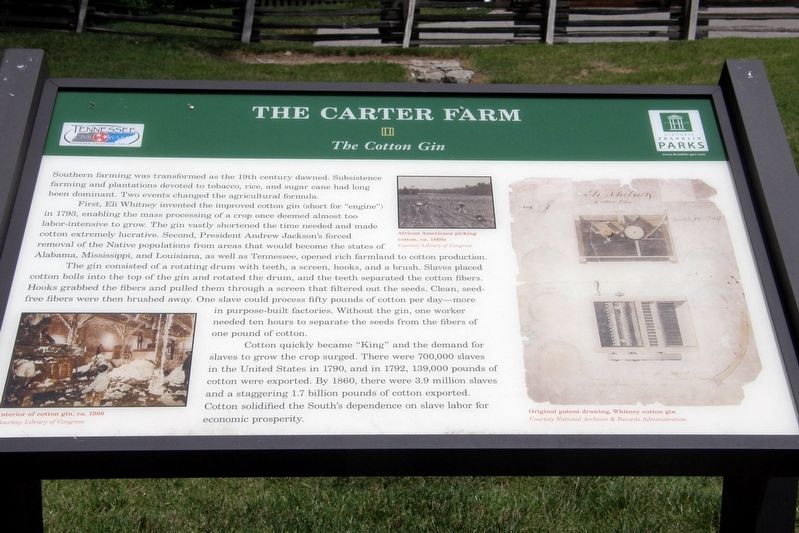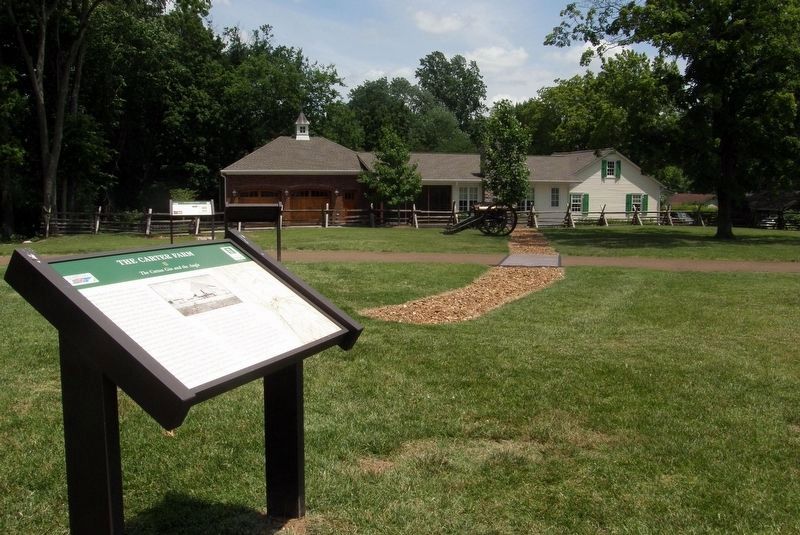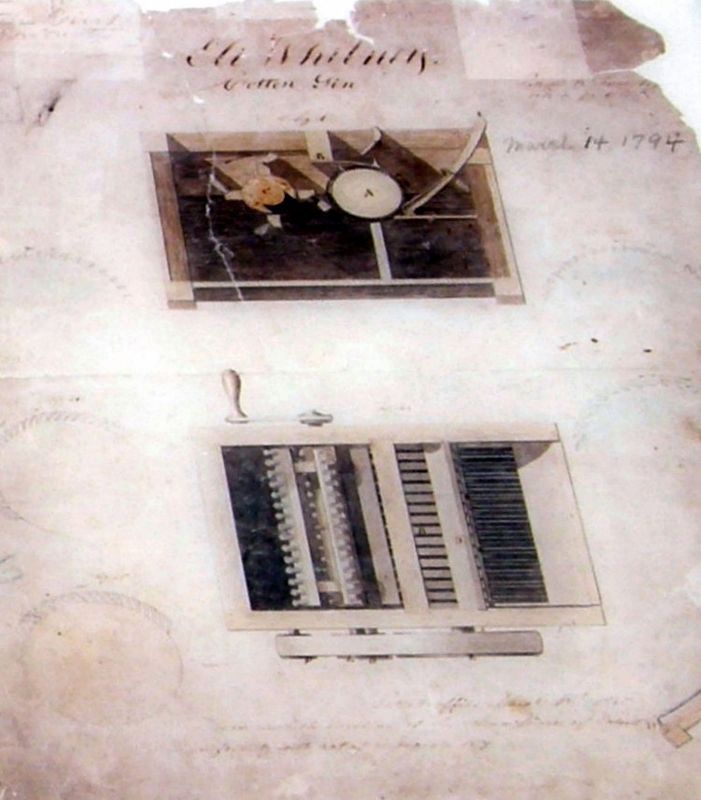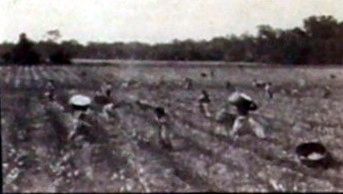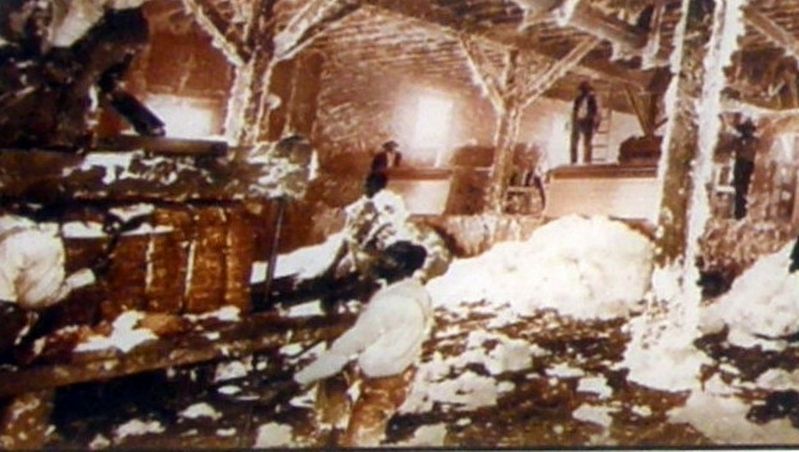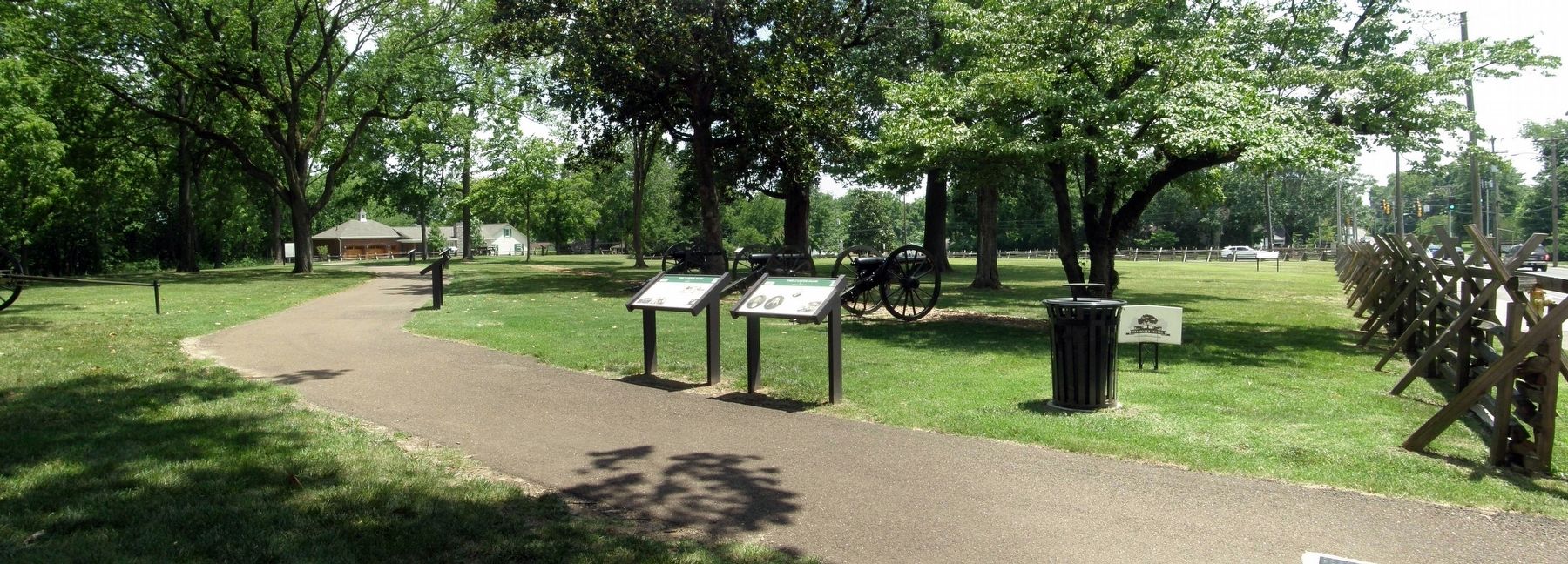Franklin in Williamson County, Tennessee — The American South (East South Central)
The Carter Farm
The Cotton Gin
— Tennessee Civil War National Heritage Area —
First, Eli Whitney invented the improved cotton gin (short for “Engine”) in 1793, enabling the mass processing of a crop once deemed too labor-intensive to grow. The gin vastly shortened the time needed and made cotton extremely lucrative. Second, President Andrew Jackson’s forced removal of the Native populations from areas that would become the states of Alabama, Mississippi and Louisiana, as well as Tennessee, opened rich farmland to cotton production.
The gin consisted of a rotating drum with teeth, a screen, hooks, and a brush. Slaves placed cotton bools into the top of the gin and rotated the drum, and the teeth separated the cotton fibers. Hooks grabbed the fibers and pulled them through a screen that filtered out the seeds. Clean, seed-free fibers were than brushed away. One slave could process fifty pounds of cotton per day – more in purpose-built factories. Without the gin, one worker needed ten hours to separate the seeds from the fibers of one pound of cotton.
Cotton quickly became “King” and the demand for slaves to grow the crop surged. There were 700,000 slaves in the United States in 1790, and in 1792, 139,000 pounds of cotton were exported. By 1860, there were 3.9 million slaves and a staggering 1.7 billion pounds of cotton exported.
Cotton solidified the South’s dependence on slave labor for economic prosperity.
Erected by Historic Franklin Parks.
Topics. This historical marker is listed in these topic lists: African Americans • Agriculture • War, US Civil. A significant historical year for this entry is 1793.
Location. 35° 54.95′ N, 86° 52.365′ W. Marker is in Franklin, Tennessee, in Williamson County. Marker is on Columbia Avenue near Cleburne Street, on the right when traveling north. Touch for map. Marker is in this post office area: Franklin TN 37064, United States of America. Touch for directions.
Other nearby markers. At least 8 other markers are within walking distance of this marker. A different marker also named The Carter Farm (here, next to this marker); a different marker also named The Carter Farm (a few steps from this marker); a different marker also named The Carter Farm (within shouting distance of this marker); a different marker also named The Carter Farm (within shouting distance of this marker); a different marker also named The Carter Farm (within shouting distance of this marker); a different marker also named The Carter Farm (within shouting distance of
this marker); a different marker also named The Carter Farm (within shouting distance of this marker); a different marker also named The Carter Farm (within shouting distance of this marker). Touch for a list and map of all markers in Franklin.
Credits. This page was last revised on July 27, 2022. It was originally submitted on September 18, 2019, by Larry Gertner of New York, New York. This page has been viewed 197 times since then and 19 times this year. Photos: 1, 2, 3, 4, 5, 6. submitted on September 18, 2019, by Larry Gertner of New York, New York. • Andrew Ruppenstein was the editor who published this page.
